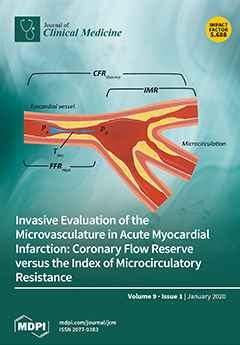Microbial contamination could compromise the stability of dental implants increasing the risk of inflammatory reactions in the surrounding soft tissues. In this human, randomized, double-blind, clinical study, the presence of
Porphyromonas gingivalis on the healing abutment and the inflammatory infiltrate surrounding peri-implant soft
[...] Read more.
Microbial contamination could compromise the stability of dental implants increasing the risk of inflammatory reactions in the surrounding soft tissues. In this human, randomized, double-blind, clinical study, the presence of
Porphyromonas gingivalis on the healing abutment and the inflammatory infiltrate surrounding peri-implant soft tissues were investigated. Experiments were done in order to clarify the effect of 0.20% chlorhexidine (CHX)
versus placebo, applied during each rehabilitation stage. Thirty patients (15 per group) were included. The load of adhering
P. gingivalis on the healing screw were quantified by quantitative Polymerase Chain Reaction (qPCR) Taq-Man. Immunohistochemical analysis was carried out on the gingival biopsy. Moreover, clinical data were recorded. Analysis of variance and the Holm–Sidak test was used to evaluate differences between groups. The results showed a significant low presence of
P. gingivalis load in healing abutments belonging to the 0.20% CHX group. Overall, the differences in terms of
P. gingivalis DNA copy number between two groups were statistically significant (
p < 0.01). All implants showed very low plaque and bleeding scores, but the placebo group appeared to have the highest expression of inflammation markers for T Lymphocytes, B Lymphocytes and macrophages Cluster definitions (CD3, CD20 and CD68). The use of 0.20% CHX could be recommended in all clinical procedures as it reduces significantly
P. gingivalis load and host inflammatory response around implants.
Full article






